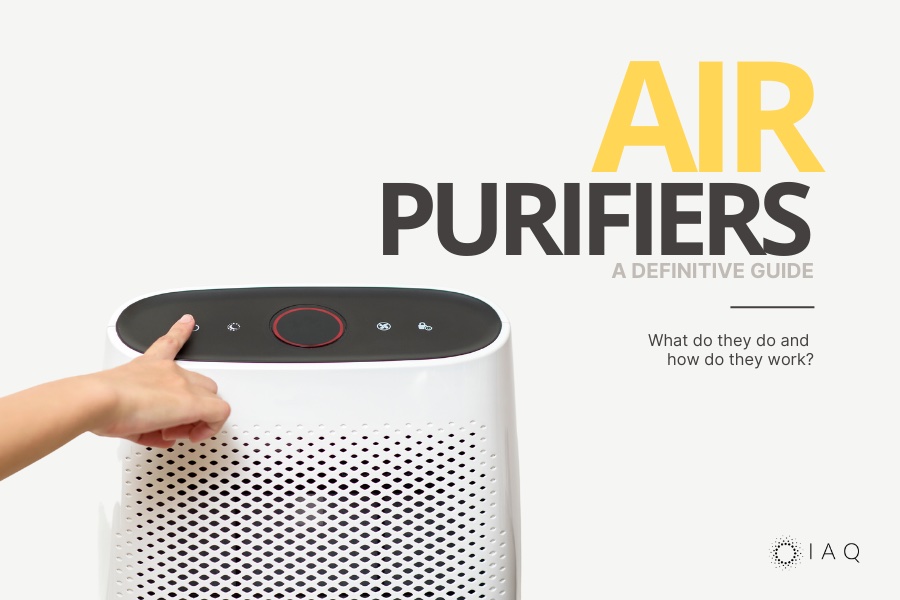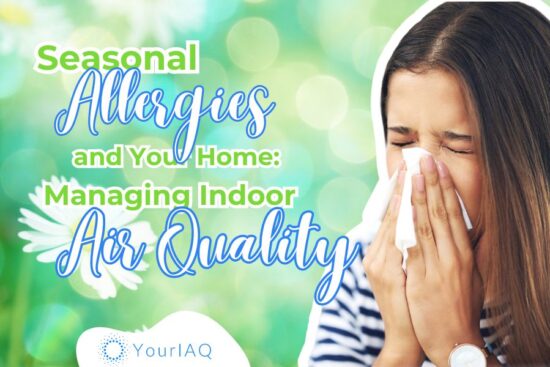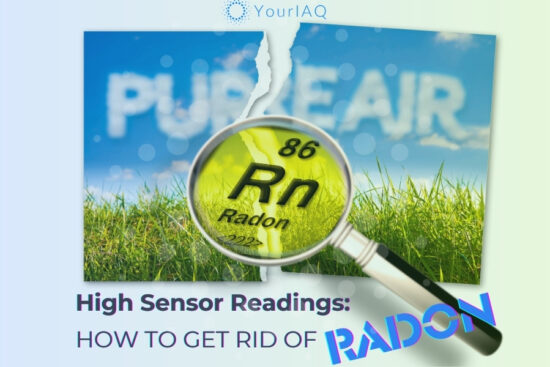
Are you looking for ways to improve the air quality in your home? If so, an air purifier could be just what you need!
An air purifier is a powerful device that can reduce airborne pollutants like pollen, dust mites and pet dander. The resulting air is healthier for those who suffer from allergies or asthma.
In this guide, we’ll explain what an air purifier does and how it works. We’ll also provide some helpful tips on how to choose the best one for your needs. With so much information available, we hope this resource will provide data needed to make an informed decision.
What Is an Air Purifier?
An air purifier is an appliance designed to improve the quality of the air you breathe by eliminating pollutants. It works by trapping dust, pollen, smoke particles, and other small allergens in filters, and then recirculating the clean air. The primary goal is reducing the overall concentration of pollutants.
What Does an Air Purifier Do and How Does It Work?
Air purifiers work by removing small particles such as dust, pet dander, and allergens from the air in your home. They utilize a variety of different methods to do this, ranging from simple filtration to more complex ionization techniques.
With respect to filters, HEPA filters are most commonly used, as they can effectively trap even the smallest particles in the air. HEPA (high efficiency particulate air) filters use an extremely fine metallic mesh made up of a mat of pleated fibers.
Some air purifiers use activated carbon filters for odor absorption, UV-C light for germ-killing capabilities, or ozone generators for chemical destruction of pollutants. Additionally, some air purifiers use ionizers to neutralize airborne particles with an electrical charge. All of these elements work together to provide cleaner and healthier air in your home.
Why Do You Need an Air Purifier?
Using an air purifier indoors can help reduce the symptoms of allergies, asthma, and respiratory illnesses exacerbated by unhealthy air. Investing in an air purifier can provide cleaner and healthier air for you and your family to breathe. It can also be beneficial for anyone suffering from illnesses related to indoor air pollution—belive it or not, indoor air pollution contributes to millions of deaths globally, each year according to the WHO.
There are various types of air purifiers available, so it’s important to compare models according to your needs.
Where You Might Need an Air Purifier
Whether you really need an air purifier can vary depending on several factors, including existing air quality in your indoor space, local climate, and environmental conditions. Generally, areas more prone to outdoor air pollutants may benefit from using air purifiers indoors. Here are some parts of the country that might find air purifiers particularly helpful:
Urban areas
Big cities and urban centers often have higher levels of air pollution due to increased traffic, industrial activities, high population density, and construction. Air purifiers can help reduce indoor exposure to pollutants like particulate matter, nitrogen dioxide, and volatile organic compounds (VOCs), which are commonly produced by these activities.
Industrial regions
Areas near industrial zones may have higher levels of airborne contaminants, such as chemicals and fine particles. Air purifiers with effective filtration systems can be beneficial in such regions.
High pollen areas
Locations with abundant vegetation and flowering plants may experience high pollen levels, leading to allergies and respiratory issues for some individuals. These areas include the southeast and pacific northwest. Air purifiers equipped with HEPA filters can help capture pollen and alleviate allergy symptoms.
Wildfire-prone regions
Areas prone to wildfires can experience periods of poor air quality due to smoke and ash particles. Air purifiers with activated carbon filters are often effective in reducing smoke-related pollutants indoors during wildfire season.
High humidity regions
Humid environments can promote the growth of mold and mildew, leading to indoor air quality issues. Coastal and low elevation areas often have high humidity. Air purifiers with mold-specific filters can be helpful in controlling mold spores and improving indoor air quality.
Allergy hotspots
Some regions have a higher prevalence of allergens like pet dander, dust mites, and mold spores. Individuals with allergies or asthma in these areas may find air purifiers particularly beneficial for symptom relief.
How to Choose an Air Purifier
When choosing an air purifier for your home, you should consider a few important aspects, including the space where it will be used, type of filter or purification process, noise level, energy consumption, smart features, as well as cost and size of the device.
When shopping for an air purifier, here are six practical tips to consider:
1. Determine your needs: Identify the specific air quality issues you want to address. Whether it’s dust, allergens, pet dander, smoke, or odors, different air purifiers are designed to target specific pollutants. Choose one that matches your needs.
2. Check the Clean Air Delivery Rate (CADR): CADR is a measure of an air purifier’s efficiency in removing pollutants. Look for an air purifier with a CADR rating that matches the size of the room where you’ll use it. Higher CADR values indicate better performance.
3. Consider the filter type: Different air purifiers use various types of filters (e.g., HEPA, activated carbon, electrostatic). HEPA filters are excellent for capturing particles, while activated carbon filters may be more effective against odors and chemicals. Ionizers may be better suited for neutralizing tiny biological pollutants. Choose an air purifier with the appropriate filter combination for your specific concerns.
4. Understand noise level and energy consumption: Check the noise level and energy consumption of the air purifier, especially if you plan to use it in a bedroom or other quiet spaces. Look for models with energy-efficient features and a noise level that won’t disrupt your daily activities. See if you can test a device before purchasing.
5. Consider smart features if you value convenience: Some air purifiers can be controlled through smartphone apps, have automatic sensors, or integrate with virtual assistants like Amazon Alexa or Google Assistant. These features can make using the air purifier more seamless and user-friendly.
6. Read customer reviews: Before making a purchase, read reviews from verified customers to get insights into real-world performance and reliability. Learn about common issues and overall satisfaction levels to make an informed decision.
Tips for Getting the Most Out of Your Air Purifier
To ensure optimal performance of your air purifier, there are a few things to keep in mind.
- The filter should be replaced regularly to prevent clogs that impair your purifier’s functioning.
- Cleaning the unit is also important, as dirt or dust can collect on parts over time and impede its ability to trap particles.
- Pay attention to where you place your air purifier; a central location in the room will provide efficient filtration while an area with a draft or direct sunlight should be avoided.
- Try to keep humidity levels to a moderate level. High humidity can promote mold growth inside the air purifier which not only prevents the filter from doing its job, but also recirculates mold spores into your air!
- Keep doors and windows closed when running an air purifier; unless outside air is filtered, bringing in fresh air can potentially replenish pollutants the purifier is neutralizing.
Air Purifiers Are Only Part of the Solution
Remember, air purifiers are not a substitute for addressing the root causes of air pollution and indoor air quality issues. In addition to using air purifiers, taking preventive measures like regular cleaning, proper ventilation, and reducing exposure to pollution sources can further improve the overall air quality in any region.
An air purifier is a valuable device for any home. It can help ensure the air you breathe is clean and non-toxic. But keep in mind there are many models and options to choose from, so always prioritize your specific needs. Study up on how to choose the best one for you, then don’t forget the maintenance tips to keep it working its best.
Finally, if you’re interested in taking your home air quality to the next level, be sure to check out IAQ by Sensables—one of the most complete indoor air quality monitors you can find on the market. Measuring more than 20 factors of air quality in real time, IAQ gives you a baseline reading on what’s in your air, thereby helping you better determine whether an air purifier is the right move for your home and family.






